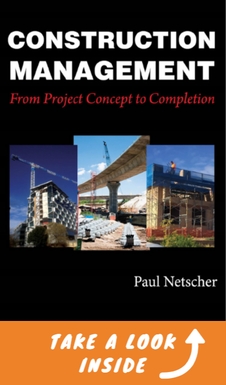Construction ProblemsWhen a design error leads to the collapse or serious damage of a structure construction companies face the wrath of the public as well as possible legal action. Inevitably there will be damage to the contractor’s reputation. Construction projects completed on time and under budget aren’t unheard of, but they’re often the exception rather than the rule. According to an Economist feature story, America’s construction productivity halved in the last 50 years — being the worst-performing industry. Home to some of the world’s largest construction firms the U.S. is a construction powerhouse second only to China, but regrettably still an industry with a disturbing over-reliance on labour when technology should be playing a bigger part. But this is only part of the problem. Construction projects are often beset by poor quality, unsafe worksites and design faults. There are several reasons for these issues, and one of them is the slow adoption of technology. Construction project managers are tackling evolving infrastructure demands, often an increase in paperwork, a shrinking skills pool, new methods and technology, cost pressures and more demanding clients. Regrettably when contractors employ technology and new systems to help them they often select technology based on price or which supplier gave the best demonstration, even when the technology or system isn’t necessarily the best fit for the company, client or project. Another issue is that contractors are notoriously bad at training their employees on how to operate and employ new technology and systems. Then, when there are failures the technology is blamed and is abandoned, often at enormous wasted expense. Contractors and clients are often wary of introducing new technology and systems to their construction projects based on their previous bad experiences, as well the high cost of setting up some of the technology. In the end the overall benefits of many new technologies aren’t seen on construction projects. In this era the new generation of workers have literally been born with a smart phone or device in their hands. It’s an everyday tool in all parts of their life. Yet, when they enter the construction industry they often find that many of the systems they are expected to use are paper based. For a technology influenced generation entering construction may seem like a technology desert, so many millennials leave the industry to work in more tech-advanced fields. This contributes to labour shortages in the construction industry making it harder for construction companies to operate. In the history of construction project failures some of the most persistent failures come from the most obvious causes. The construction industry seems slow to learn from mistakes and to implement strategies to prevent them from reoccurring. Below are some of the more common construction problems: Structural Design ErrorsUnclear design specifications create problems at a jobsite. Clients don’t always adequately articulate project requirements and outcomes so that contractors and owners can have the same expectations and work to a common goal through the project until project closeout. Contractors, designers and the client working together from the start of the project helps minimise issues and ensures a successful project though the full lifecycle of the project. The latest investigation by the U.S. Department of Labor’s Occupational Safety and Health Administration attributed the collapse of the Florida University pedestrian bridge to faulty structural design. As cracks formed on the concrete truss, they weren’t regarded as safety concerns by the engineer on record. Upon investigation, it was found that the truss was a non-redundant structure whose diagonal members needed to be secured since the risk of a collapse would be high if even one member failed. Some other common design errors include:
Prevention tactic: Critically evaluate design specs with designers/architects by double-checking values of structural elements and adopting appropriate building standards. A good review of each installation will ensure the structure has been designed correctly. Appoint professionals to oversee each installation. Faulty Construction PlansConstruction plans outline project specifics that go beyond just laying out work breakdown structures. Essential components include:
Prevention tactic: Most construction plans lack adequate information when unexpected problems occur. While planning the development of a building construction managers need to work closely with safety managers, risk analysts, and all contractors to document a contingency management strategy. Communication Failures
Prevention tactic: Choose project management software with flexible communication options that enables collaboration regardless of your location, time zone, and task type. Ensure that your team and every other relevant team is updated on recent drawings or client change orders in order to prevent rework. Construction Equipment FailsNon-compliance with OSHA safety regulations: Given the high incidence of accidents and hazardous encounters on jobsites OSHA’s safety guidelines prescribe procedures for all types of construction work. Projects usually require various machines and items of equipment, from portable electric tools to cranes and large earthmoving machines. Older equipment often doesn’t meet the required safety standards which can threaten worker lives and result in fines and imprisonment for contractors and owners. Problems with construction equipment include:
Prevention tactic: Project managers need to hand over smart communicative devices to workers that live-record what’s communicated in every interaction through cloud-based software. Additionally, all equipment must undergo visual inspections based on manufacturer guidelines and owner-specified guidelines for a more thorough maintenance to ensure it performs optimally. Poor Construction Management Practices
Prevention tactic: Scope creep, changes and delays must be documented, and all parties notified immediately these occur. Encouraging jobsite collaboration through smart communicative devices will keep your workforce intact. ConclusionConstruction errors result in project failure for both owners and contractors. By integrating smart technology with properly trained workers construction companies can forecast and mitigate risks across the value chain. Invariably, vulnerabilities and uncertainties will arise either out of shifting client demands or changing market needs. With a functional team and constructional management system project managers can prevent minor issues becoming huge problems. How have you prevented failures in your project management career? Bio: Gagandeep Bimbh I’ve been writing about breakthrough construction technologies when they were considered nascent. I aspire to guide B2B audiences in onboarding the best construction management software through topical and thought-leading content.  Do you want to learn more construction tips and insights? Ensure your project is a success. Read 'Construction Management From Project Concept to Completion' available from Amazon and other bookstores. construction management construction project management
0 Comments
Leave a Reply. |
Archives
June 2024
Note: We welcome genuine comments, especially comments that add additional information to the subject matter in the article. We however reserve the right to remove inappropriate comments, which includes comments that have nothing to do with the subject, comments that include inappropriate language, and comments that are an advertisement for a product or company, or which include an advertising link. Comments must be in English. We will not enter into discussion on why a particular comment was removed.
CategoriesCopyright 2016 - The attached articles cannot be reproduced for commercial purposes without the consent of the author.
The opinions expressed in the attached articles are those of the writer. It should be noted that projects are varied and different laws and restrictions apply which depend on the location of the contractor and the project. It's important that the reader uses the supplied information taking cognisance of their particular circumstances. The writer assumes no responsibility or liability for any loss of any kind arising from the reader using the information or advice contained herein. "I have what I consider some of the best books on construction management."
Books are available from: Amazon.com Amazon.co.uk takealot.com kalahari.com Amazon.in Amazon.de Amazon.fr Amazon.it Amazon.com.au Powell's Fishpond uread bokus Amazon.ca Amazon.es Other retail stores Available in paperback or on Kindle "28 YEARS OF CONSTRUCTION PROJECT MANAGEMENT EXPERIENCE, DEVELOPING SUCCESSFUL CONSTRUCTION PROJECT MANAGERS AND BUILDING SUCCESSFUL CONSTRUCTION COMPANIES"
|




 RSS Feed
RSS Feed




